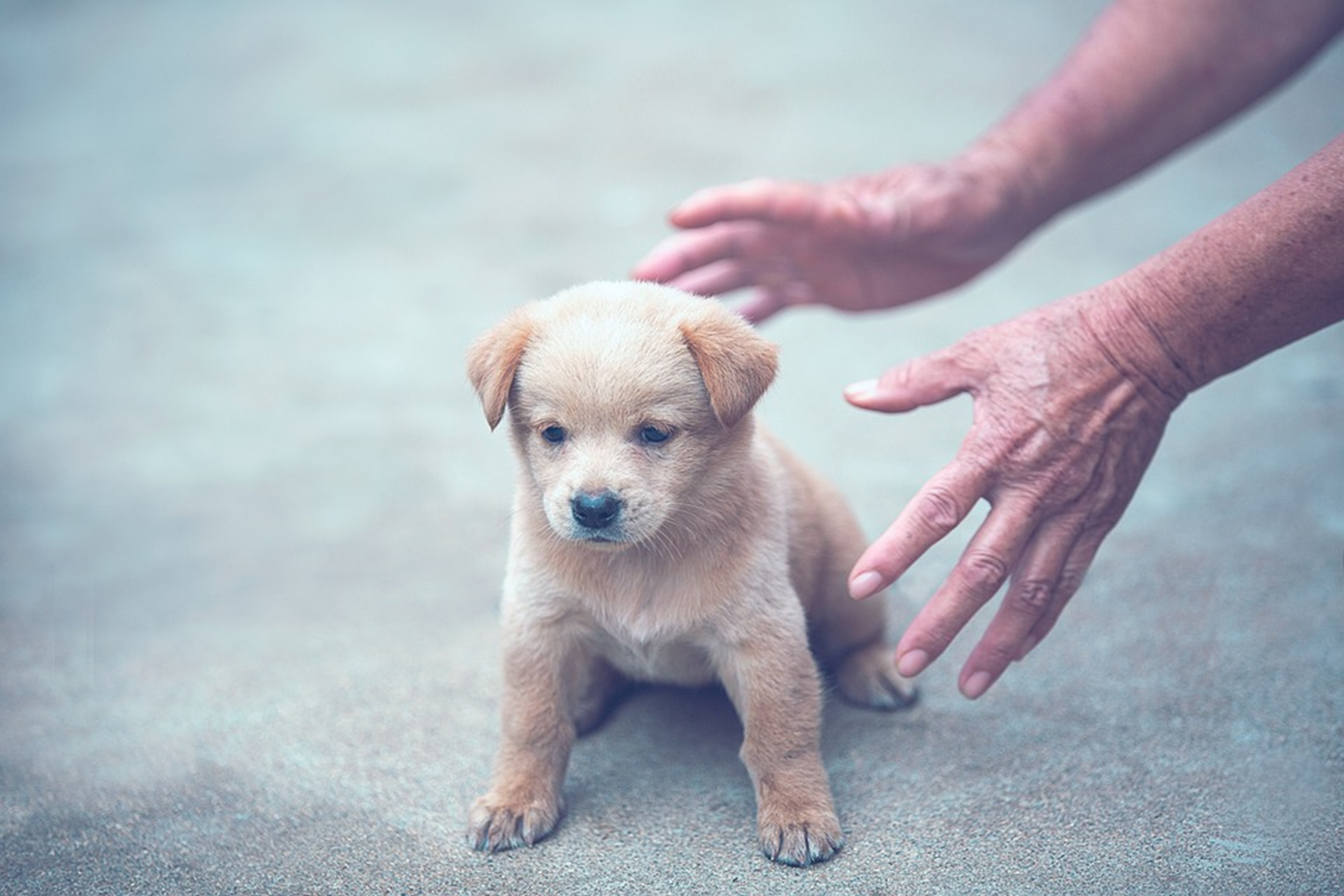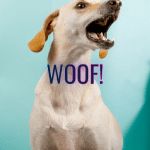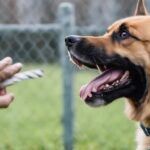Getting a new puppy is an exciting time, but it also comes with a lot of responsibility. One of the most important aspects of raising a well-behaved and happy dog is starting training early. But, When Can I Start Training My Puppy?
In “The Ultimate Puppy Training” guide, we'll answer this question and provide you with valuable tips and techniques to help you start your puppy off on the right paw.
When Can I Start Training My Puppy?
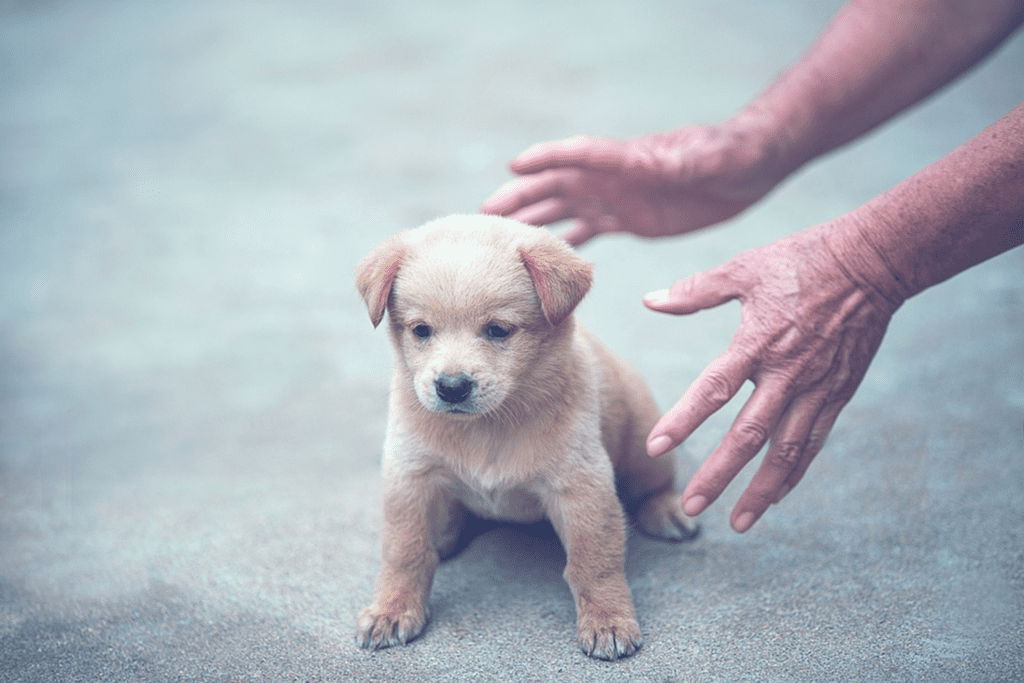

Exciting times ahead! Are you wondering when your furry little pup is ready to start training? Let me help you out – I've got all the information you need on when you can start training your precious puppy. But before we move further, let us first understand how puppies learn. and What should I teach my puppy? or What is the first thing you should teach your puppy?
Don't you think it is logical to first learn this…
How do puppies learn?
Puppies learn through a process of observation, imitation, and repetition. They often learn by watching older dogs and mimicking their behavior, especially when it comes to social cues.
Positive reinforcement, such as treats and praise, also plays a crucial role in their learning process. Through repetition of activities and consistent training, puppies begin to understand commands and behaviors.
As they mature, puppies continue to learn through experiences and interactions with their environment, shaping their behavior and abilities.
What should I teach my puppy?
When it comes to training your new puppy, there are a few key areas to focus on. It's important to start puppy training early, with experts suggesting you start as soon as you bring your little bundle of joy home, usually around 8 weeks of age.
One of the first things you'll want to teach your dog includes basic commands, such as sit, stay, and come. Leash training, house training, and socialization are also critical to ensure your pup becomes a well-rounded and well-behaved member of the family.
Crate training can also be beneficial for both potty training and providing a safe place for your puppy to relax. Basic obedience, handling, grooming, bite inhibition, and focus and attention are also important skills to instill in your pup.
And, of course, positive reinforcement is key to a successful training experience, so make sure to reward good behavior with plenty of praise and treats.
First Thing First – What is the first thing to teach a puppy?
The first thing you should teach your puppy is their name. Establishing a strong recall response is essential for effective communication and building a foundation for further training.
Use positive reinforcement, such as treats and praise, when your puppy responds to their name, creating a positive association and setting the stage for successful training sessions.
Basic Puppy Training Timeline – Training Milestones
When it comes to basic puppy training, it's important to start training a puppy as early as possible. The ideal time to begin house training is around 8 weeks old, as this is when a puppy can start to control their bladder and bowel movements.
Basic obedience training can also begin at this time, with simple commands like “sit,” “stay,” and “come.” As the puppy grows older, you can continue to help your puppy learn more advanced commands and behaviors.
It's important to be patient and consistent with their training, as puppies need repetition and positive reinforcement to learn. By following a basic puppy training timeline, you can help your puppy become a well-behaved and obedient companion in the future.
7-8 Weeks Old – Early foundations
At eight weeks of age, your puppy is ready for basic training. It is important to start early so that they can develop good habits. Begin with simple cues such as sit, stay, and come. Take your puppy to a designated potty area frequently, especially after meals and naps.
Use positive reinforcement, such as treats or praise, to encourage good behavior. Start building a routine and schedule for feeding, potty breaks, and playtime. Make sure your puppy gets plenty of socialization with other dogs and people.
| Age | Training Focus | Activities | Frequency |
|---|---|---|---|
| 7-8 Weeks | Socialization: | – Gentle exposure to various people and sounds | Daily |
| Handling Exercises: | – Get the puppy used to being touched and handled | Short sessions several times a day | |
| Basic Commands: | – Introduce simple commands like “sit” and “come” | Short, positive sessions | |
| Crate Introduction: | – Familiarize the puppy with the crate | Gradual introduction to the crate |
8-10 Weeks Old – The outside world
When your puppy reaches four months of age, you can begin more advanced training such as leash walking and commands like “leave it” and “drop it.” With consistent training and patience, your puppy will grow into a well-behaved and obedient adult dog.
| Age | Training Focus | Activities | Frequency |
|---|---|---|---|
| 8-10 Weeks | Continued Socialization: | – Expand exposure to different environments | Daily outings and interactions |
| Basic Commands Reinforcement: | – Reinforce and build on basic commands | Short sessions multiple times a day | |
| Potty Training: | – Establish a consistent schedule for potty breaks | Frequent bathroom breaks | |
| Leash Introduction: | – Introduce the puppy to wearing a leash | Short, positive leash sessions |
10-12 Weeks Old – Puppy training classes
When your puppy is 10 to 12 weeks old, it's important to start with basic advanced obedience training. This is the perfect time for your furry friend to learn the essentials, like sit, stay, and come.
It's also a crucial time for Socialization Outdoors, getting your puppy accustomed to walking on a leash. Short training sessions, about 5-10 minutes, are the most effective at this age as puppies have short attention spans.
As a puppy parent, consistency and patience are key. It's important to let your puppy socialize with other dogs and people during this time to prevent future behavior issues.
Training your dog at a young age will set the foundation for a well-behaved and well-adjusted adult dog.
| Age | Training Focus | Activities | Frequency |
|---|---|---|---|
| 10-12 Weeks | Advanced Commands: | – Introduce more advanced commands like “stay” | Build on previous commands |
| Socialization Outdoors: | – Walks in different environments | Gradual exposure to the outdoors | |
| Impulse Control: | – Teach self-control around food and toys | Short training sessions | |
| Basic Grooming: | – Introduce brushing and handling | Gradual and positive grooming sessions |
12-16 Weeks Old – Advanced training
At 12-16 weeks old, your puppy is ready for more advanced training. Continued socialization is important during this time to ensure your puppy grows up to be a well-adjusted and friendly adult dog.
Advanced leash training can begin, as well as introducing more advanced commands such as “stay” and “leave it”.
Behavioral training is also crucial at this age, as your puppy may start testing boundaries and exhibiting more challenging behaviors. It's important to start training your puppy as soon as possible, as their attention span is still quite short at this age.
Creating a consistent routine and positive reinforcement will help your puppy to learn and adapt quickly. Whether at puppy home or on walks, it's essential to continue training your new puppy to ensure they develops into a well-behaved and well-rounded adult dog.
| Age | Training Focus | Activities | Frequency |
|---|---|---|---|
| 12-16 Weeks | Continued Socialization: | – Exposure to various environments, people, and other dogs | Regular outings and interactions |
| Advanced Leash Training: | – Work on loose leash walking and heeling | Daily walks with positive reinforcement | |
| Advanced Commands: | – Build on commands and introduce new ones | Consistent training sessions | |
| Behavioral Training: | – Address any behavioral issues or concerns | Consult a professional if needed |
6 Months Old
At 6 months old, your puppy is still in the prime learning stage, making it a great time to continue with obedience training. Use positive reinforcement to teach commands like sit, stay, come, and heel.
In addition to obedience training, introducing off-leash training can be beneficial for your pup's mental and physical well-being.
This age is also a good time to start advanced behavioral training to address any specific issues your puppy may have, such as barking, jumping, or chewing.
Alongside training, it's important to prioritize your puppy's health and wellness, with regular check-ups, vaccinations, and a nutritious diet.
With consistency and patience, your 6-month-old puppy can become a well-behaved, happy, and healthy companion for many years to come.
| Age | Training Focus | Activities | Frequency |
|---|---|---|---|
| 6 Months | Obedience Training: | – Focus on solidifying basic and advanced commands | Regular training sessions |
| Off-Leash Training: | – Begin off-leash training in a safe, enclosed area | Gradual introduction to off-leash commands | |
| Advanced Behavioral Training: | – Address any remaining behavior concerns | Consultation with a professional if needed | |
| Health and Wellness: | – Regular vet check-ups, grooming, and exercise | Establish a routine for well-being |
Basic Puppy Training Techniques
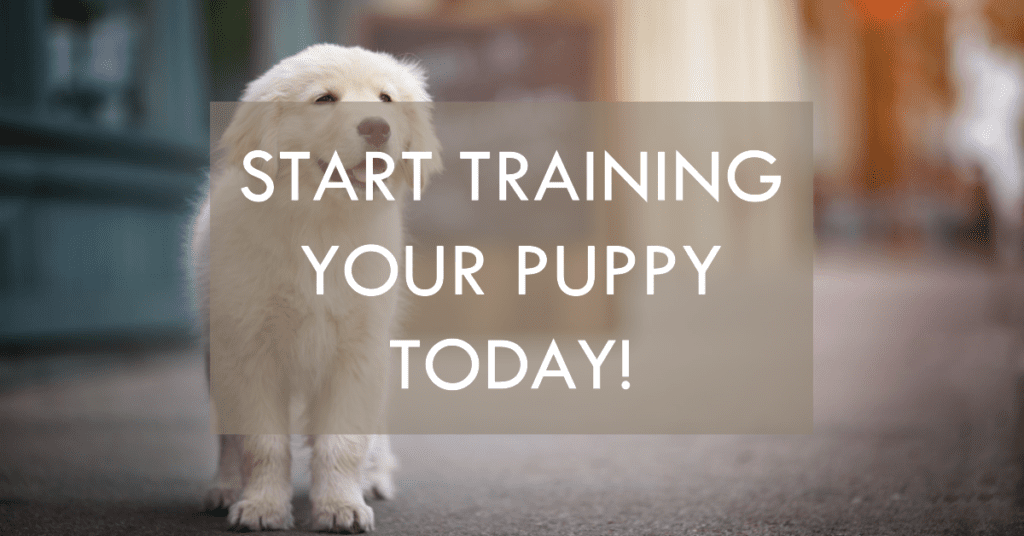

Basic puppy training techniques focus on positive reinforcement, consistency, and patience. Here are some essential techniques for training your puppy:
Luring a Puppy
“Luring” is a training technique used to guide a dog into a specific position or behavior by using a reward as a lure. This involves using a treat or a toy to guide the dog's movements, making it easier for them to understand and perform the desired action. Luring is especially effective for teaching basic commands and shaping behaviors.
How do I use Luring?
Here's how you can use luring effectively:
- Choose the Right Reward:
- Select a high-value treat or toy that your dog finds particularly enticing. This will motivate them to follow the lure.
- Hold the Lure:
- Hold the treat or toy in your hand, making sure it's visible and interesting to your dog.
- Guide the Movement:
- Use the lure to guide your dog into the desired position. For example, if you want your dog to sit, hold the treat above their head, and move it back over their head. As their nose follows the treat, their natural response is to sit down.
- Timing is Key:
- As soon as your dog performs the desired behavior, immediately praise them and give them the treat. Timing is crucial for your dog to associate the reward with the correct action.
- Repetition and Reinforcement:
- Repeat the luring process several times, gradually reducing the dependence on the lure. Introduce verbal commands along with the luring motion.
- Fade the Lure:
- Once your dog starts to understand the command, begin to fade out the use of the lure. This involves making the hand motion without the actual treat in your hand.
- Add Verbal Cues:
- Introduce a verbal cue while using the lure. For example, say “sit” as you guide your dog into the sitting position. Eventually, your dog will associate the verbal cue with the action.
- Practice in Different Environments:
- Gradually practice the command in various environments and with different levels of distractions to reinforce the behavior.
What if my puppy doesn’t follow the lure?
If your puppy doesn't follow the lure, it's not uncommon, especially if they are still learning or if the distraction level is high. Here are some troubleshooting tips to help you address the situation:
- Increase the Attractiveness of the Reward
- Reduce Distractions
- Break Down the Behavior
- Adjust the Luring Motion
- Be Patient and Calm
- Try at a Different Time
- Reevaluate the Training Environment
- Seek Professional Guidance
What is capturing?
“Capturing” is a positive reinforcement training technique that involves rewarding a dog for spontaneously exhibiting behavior you want to encourage. Instead of actively prompting or luring the behavior, you wait for the dog to perform the action on its own, and then you reward it.
How do I use capturing?
Here's how you can use capturing for puppy training:
- Observe Natural Behaviors:
- Pay close attention to your puppy's natural behaviors throughout the day. This could include behaviors like sitting, lying down, or any other actions you find desirable.
- Have Treats Ready:
- Keep treats handy so that you can quickly reward your puppy when you observe the desired behavior.
- Timing is Crucial:
- As soon as your puppy naturally exhibits the behavior you want to reinforce, immediately reward them. The timing of the reward is essential for the puppy to associate the treat with the specific action.
- Use a Marker Word:
- Consider using a marker word (like “yes” or “good”) to signal to your puppy that they've done something right. Follow the marker word with a treat.
- Repeat and Reinforce:
- Repeat the process whenever your puppy performs the desired behavior naturally. Consistent reinforcement helps strengthen the association between the behavior and the reward.
- Add Verbal Cues Later:
- Once your puppy is consistently offering the behavior, you can add a verbal cue. For example, if your puppy naturally sits, you can later say “sit” just before they sit, reinforcing the association.
- Expand to Other Behaviors:
- As your puppy becomes familiar with the capturing process, you can use it to reinforce other behaviors you find desirable.
What is a marker in Puppy Training?
In puppy training, a “marker” refers to a clear and consistent signal that communicates to the dog that they have performed the desired behavior and that a reward is coming. Markers are often used in combination with positive reinforcement techniques to reinforce good behavior and facilitate communication between the owner and the puppy.
The two most common types of markers used in dog training are:
- Verbal Marker:
- A specific word, such as “yes” or “good,” is used to indicate that the dog has done something right. The marker word is delivered in a positive and upbeat tone.
- Clicker:
- A clicker is a small handheld device that makes a distinct clicking sound. The click serves as a precise marker, and it is followed by a reward. Clicker training is particularly effective because the sound is consistent and always the same.
How do I use markers in puppy training?
Here's how you can use a marker in puppy training:
- Associating the Marker:
- Begin by associating the marker (verbal or clicker) with rewards. Say “yes” or click the clicker and immediately follow it with a treat. Repeat this several times so that your puppy learns to connect the marker with the positive outcome of receiving a reward.
- Timing is Crucial:
- The marker must be delivered at the exact moment your puppy performs the desired behavior. This precision helps your puppy understand which specific action is being rewarded.
- Reward Immediately:
- After using the marker, follow it up with a reward (treat, praise, or play) immediately. The quick reward reinforces the association between the marker and the positive outcome.
- Consistency is Key:
- Be consistent with your use of the marker. Use the same word or clicker consistently for the same behavior. This clarity helps your puppy understand what they are being rewarded for.
- Transition to Verbal Cues:
- Once your puppy understands the association between the marker and the reward, you can start using it to communicate during training sessions. For example, if you're teaching the “sit” command, you would mark the moment your puppy sits and then reward them.
- Gradual Phasing Out:
- As your puppy becomes more proficient with commands, you can gradually reduce the frequency of treats while still using the marker. This helps maintain a positive association with the behavior.
What is shaping?
“Shaping” in puppy training is a method where you reinforce successive approximations of a desired behavior, gradually shaping the behavior you want. Instead of prompting the exact behavior, as in luring, shaping involves rewarding small steps or actions that lead toward the ultimate behavior you are trying to teach.
How to use shaping in puppy training?
Here's how you can use shaping in puppy training:
- Select the Desired Behavior:
- Identify the specific behavior you want to teach your puppy. It's essential to choose a behavior that can be broken down into smaller, achievable steps.
- Break Down the Behavior:
- Analyze the behavior and break it down into smaller components or steps. Start with the simplest action that is a step toward the final behavior.
- Reward Successive Approximations:
- Wait for your puppy to naturally exhibit any behavior that approximates the first step. When they do, immediately reward them. The goal is to reinforce small steps in the right direction.
- Shape Gradually:
- Over successive training sessions, gradually raise your criteria for what earns a reward. Only reward behaviors that are closer to the final goal. For example, if you're shaping a “spin” command, you might initially reward your puppy for turning their head to the side. As they understand the concept, you can increase the criteria to reward a slight turn of the body, and so on.
- Be Patient:
- Shaping requires patience. Your puppy might offer various behaviors before figuring out what you're looking for. Be patient and reward any step in the right direction.
- Use a Marker:
- Incorporate a marker, such as a clicker or a specific word, to signal to your puppy that they've done something right. This helps them understand which specific behavior is being rewarded.
- Shape in Short Sessions:
- Keep training sessions short to maintain your puppy's interest and enthusiasm. Multiple short sessions spread throughout the day can be more effective than one long session.
- End on a Positive Note:
- Always end the training session on a positive note, even if progress is slow. You want your puppy to associate training with positive experiences.
Tips for Effective Puppy Training
When it comes to effective puppy training, there are a few key tips to keep in mind. Firstly, it's important to bring your puppy home at around 8 weeks of age, as this is the best time to start the training process.
It's also crucial to start teaching basic training commands, such as sit, stay, and come, using positive reinforcement and rewards.
Another important method of training is to start house training your puppy, as this will help them learn where it's appropriate to go to the bathroom.
Additionally, it's a good idea to start crate training early on, as it can help with house training and provide a safe space for your puppy. Overall, consistency and patience are key in effectively training your puppy, so be sure to keep your puppy used to the training routine and always remain positive and encouraging.
Use Positive Reinforcement
When bringing home a new puppy, it's important to use positive reinforcement for training. Keep in mind that your puppy responds well to rewards and praise, so use treats and enthusiastic encouragement to reinforce good behaviors. Start training as soon as your puppy comes home and use tips for training outside the home to ensure effective and successful results.
Short Training Sessions
When it comes to potty training a puppy, it's best to keep the training sessions short. Start getting them used to the idea of going outside by starting with short, frequent training sessions. You can start by teaching the puppy to sit before transitioning to teaching the puppy a new command. Keeping the training sessions short will help the puppy to stay focused and make progress more effectively.
Remain Consistent When Training Your Puppy
When training your puppy, it's important to remain consistent. Puppies start learning from a young age, so early training is crucial. Use training cues and basic commands like sit to establish good behavior. If you want your puppy to listen and obey, formal training is necessary to maintain consistency and discipline.
Practice in Different Environments
It is important to expose your puppy to different environments for them to learn how to behave in various settings. Puppy socialization classes can be a great way for them to interact with other dogs and people. Training should begin immediately and continue consistently until at least six months of age to ensure good behavior in different environments.
Be Patient with training
When bringing a new puppy home, it's important to be patient with the training process. Establishing a training program and being consistent is key. Remember that accidents are part of training, so be understanding and focus on positive reinforcement. Teach your pup the rules and routines, and start each day with training first thing in the morning.
Benefits of Training A Puppy
| Benefit | Description |
|---|---|
| Builds a Strong Bond | Training creates a positive and trusting relationship between the owner and the puppy, strengthening the bond. |
| Establishes Communication | Training provides a way for the owner and the puppy to communicate effectively, reducing misunderstandings and enhancing cooperation. |
| Promotes Mental Stimulation | Engaging in training exercises challenges the puppy mentally, preventing boredom and promoting cognitive development. |
| Encourages Good Behavior | Training reinforces positive behaviors, making it more likely that the puppy will exhibit desirable actions and manners in various situations. |
| Aids in Socialization | Training involves exposure to different environments, people, and animals, promoting socialization skills and reducing fear or anxiety. |
| Facilitates Control and Safety | Trained puppies are more responsive to commands, allowing owners to maintain control in various situations and ensuring the safety of the puppy. |
| Prevents Behavioral Issues | Early training can help prevent common behavioral problems such as aggression, excessive barking, and destructive chewing by promoting appropriate behaviors. |
| Fosters a Positive Learning Attitude | Training instills a positive attitude toward learning, making it easier for the puppy to adapt to new situations, commands, and environments throughout their life. |
| Strengthens Owner's Leadership Role | Training establishes the owner as a leader, promoting respect and cooperation from the puppy and minimizing potential dominance or behavior issues. |
| Enhances Well-being | A well-trained puppy is likely to experience a higher quality of life, as they can participate in various activities, have positive interactions, and enjoy a well-balanced lifestyle. |
When Can I Start Training My Puppy: FAQs and Common Training Challenges
What is an ideal schedule for a puppy?
An ideal schedule for a puppy includes regular feeding times, bathroom breaks every 2-3 hours, consistent playtime, and plenty of rest. Puppies thrive on routine, so having set times for meals, walks, and training will help them feel secure and become well-behaved.
How many training sessions a day should a puppy have?
It's important to keep training sessions short and sweet with a puppy, as they have short attention spans. Aim for 3-5 short sessions throughout the day, focusing on basic commands and positive reinforcement. It's also important to incorporate mental stimulation and playtime into their daily routine to help them learn and develop properly.
In what order should I teach my puppy commands?
When teaching commands to your puppy, it's important to start with basic obedience commands such as “sit,” “stay,” and “come.” Once they have mastered these, you can move on to more advanced commands like “heel” and “down.”
When can I stop giving treats?
You can start reducing the frequency of treats once your pet has mastered the desired behavior. Over time, you can slowly wean them off treats and replace them with verbal praise or physical affection. Just be sure to continue reinforcing good behavior whenever necessary to maintain their training and obedience.
How much time should I spend training my puppy every day?
It is recommended to spend around 15-20 minutes training your puppy every day. Short, frequent training sessions are more effective than long, infrequent ones. Training should also be integrated into your daily routine, such as during meal times or before going on a walk.
What can be done if my puppy is too distracted or excitable to control?
If your puppy is too distracted or excitable to control, it's important to work on basic obedience training and socialization. Set aside dedicated time for training and use positive reinforcement techniques. Consider consulting a professional dog trainer for additional guidance and support. Exercise and mental stimulation can also help in managing your puppy's behavior.
When should I start socializing my puppy?
It is important to start socializing your puppy as early as possible, ideally around 8-16 weeks of age. This is a critical time for your puppy to learn how to interact with other dogs, humans, and different environments. Proper socialization can help prevent aggression and fearfulness in the future, leading to a more well-adjusted adult dog.
Why does my 16-week-old puppy seem afraid?
Your 16-week-old puppy may seem afraid due to a variety of reasons such as lack of socialization, previous negative experiences, or genetic predisposition. It's important to create a safe and reassuring environment for your puppy, and gradually expose them to new experiences to build their confidence and reduce their fear.
Should I also consider training classes?
Yes, considering training classes can be beneficial for enhancing your skills and knowledge in a specific area. Training classes offer structured learning and the opportunity to gain hands-on experience. They can also provide valuable networking opportunities and access to puppy experts.
Conclusion
Starting your puppy's training early is essential for their development and behavior. It is important to establish good habits and boundaries from the beginning and to be patient and consistent with your training. Recap of key points include the importance of positive reinforcement, setting clear expectations, and establishing a routine.
Consistent training and positive reinforcement are essential for a well-behaved and happy pup. With dedication and patience, you can help your puppy become a well-trained and well-adjusted member of your family.

